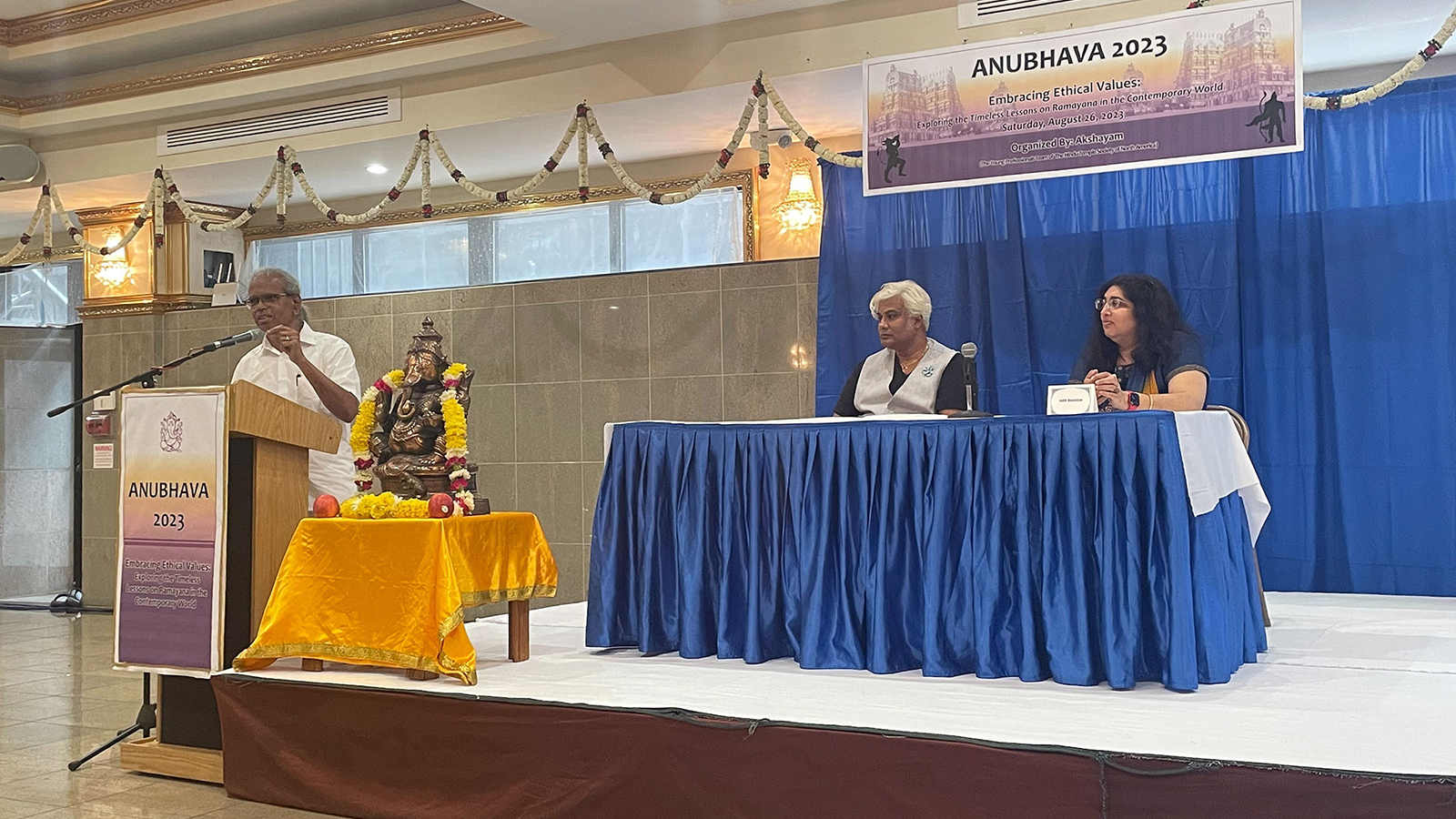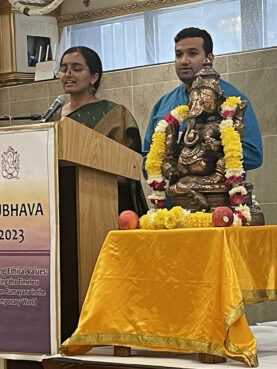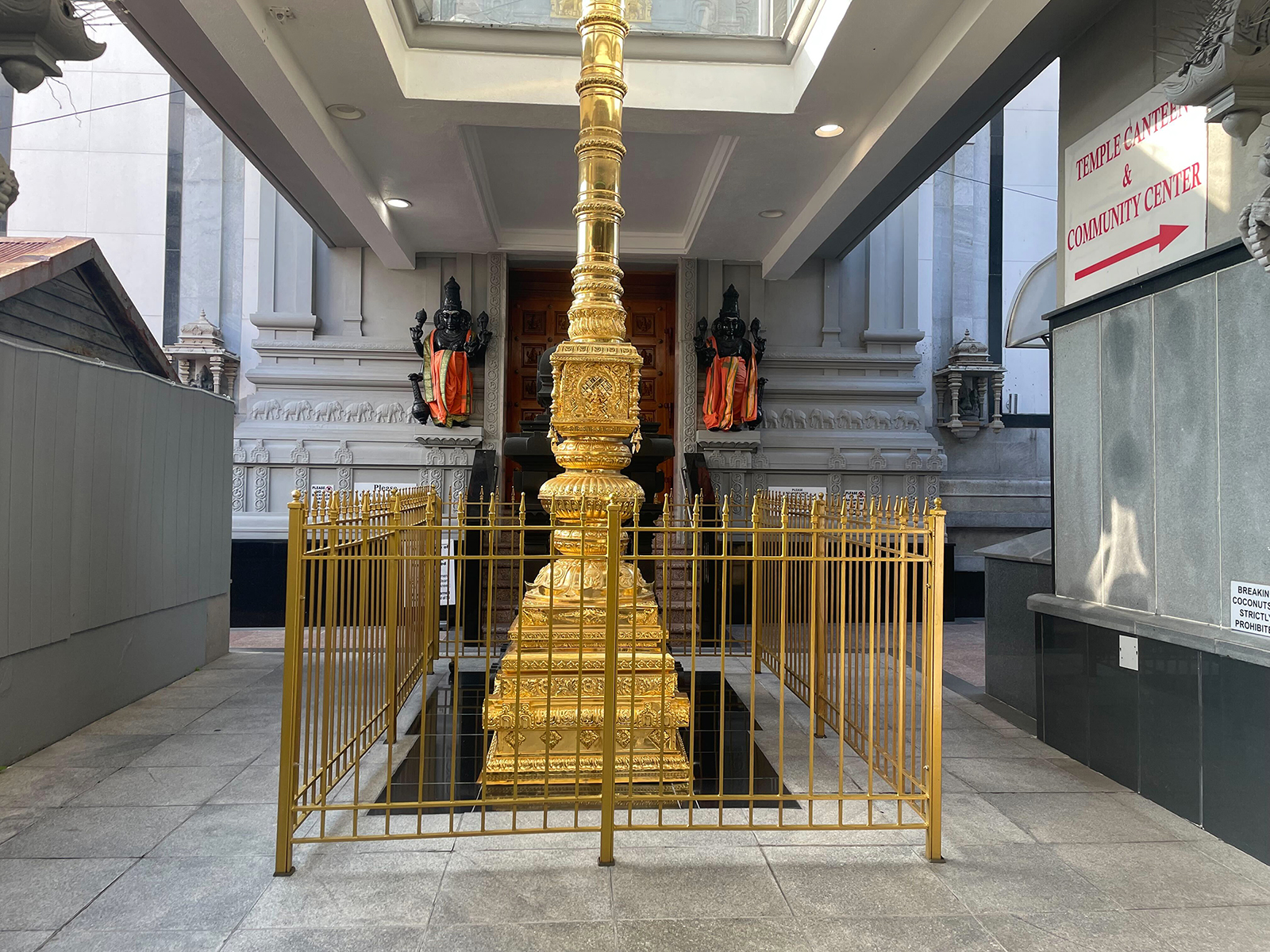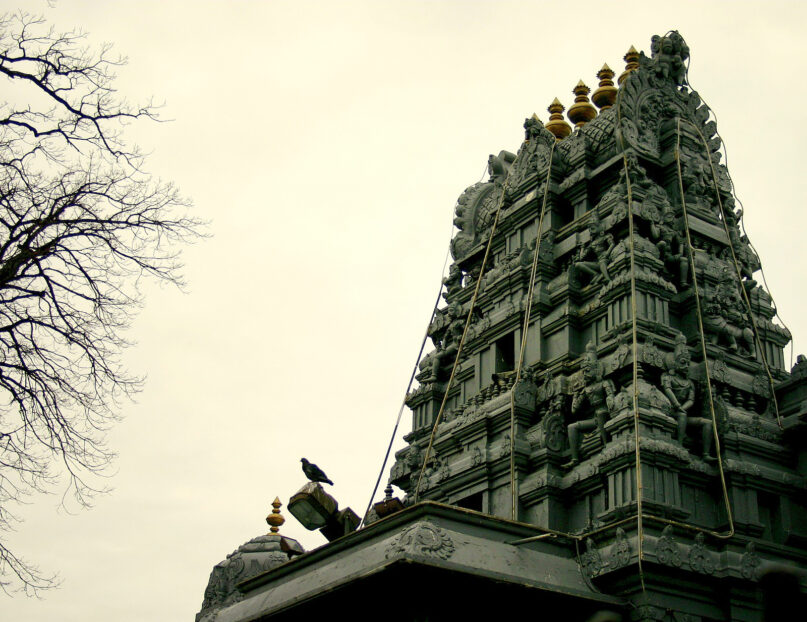(RNS) — “Temples are built for young people,” said Uma Mysorekar, the president of the Hindu Temple Society of North America, to an audience of young Hindus gathered at the Sri Maha Vallabha Ganapati Devasthanam, a large temple spanning a full block in New York’s Queens borough.
The mix of college kids and young professionals had come to participate in Akshayam, a venture sponsored by HTSNA to keep the lessons of the faith in front of the next generation of Hindu leaders in the United States. Through community service and educational consortiums, Akshayam’s organizers are also aiming to regain a hold on a religion being pulled in multiple directions by India’s nationalist politics on one hand and Western influence on the other.
Sitting in the temple’s Parvati Hall, named after Hinduism’s archetypal mother goddess, these Hindus are here to discuss the Ramayana, an epic narrative that tells the story of God’s incarnations and their interactions with humans.
“To be Hindu is to read,” said Vishwa Adluri, a professor of philosophy at Hunter College in New York and one of the day’s panelists. Noting that children of other faiths have long had Sunday school classes, Bible studies and other avenues to have rich theological discussions from a young age, he said it is now time for young Hindus to incorporate the study of the faith into their identity.
The young people in the room appeared more than willing. As religious scholars presented the importance of the steadfast relationships between Ram, Lakshman and Sita — the Lord, his brother and his wife — and Ram’s epic journey to retrieve Sita from the half-man, half-demon, Ravana, the young people were full of questions about passages that have long been seen as problematic. Why, for instance, did Lord Rama banish his pregnant wife Sita away to the forest, setting up her kidnapping by Ravana and her need for rescue?

Ravi Vaidyanaat Sivacharya, from left, Vishwa Adluri and Aditi Banerjee during an Akshayam program at the Sri Maha Vallabha Ganapati Devasthanam in Queens, New York, Aug. 26, 2023. RNS photo by Richa Karmarkar
The answers often related the ancient texts to the moral questions of the modern world. According to Adluri, villagers in Ram’s kingdom began speaking poorly of Sita behind her back by questioning her chastity. He banished her to maintain his own, and his kingdom’s, dignity. Adluri pointed out how this impulse manifests today in social media, he says, where gossip and slander about others “grows wings,” sometimes leading us to believe misinformation.
“This,” said Adluri, “is how ordinary people become asuras,” or demons.
While the Ramayana and Hinduism’s other main sacred text, the Mahabharata, have been exploited for many TV and movie dramas — most recently the controversial movie “Adipurush” — scholar Aditi Banerjee said reading the text yields so much more nuance to those willing to spend time with it.
As English translations and online resources proliferate, Banerjee says, it is more important than ever for Hindus to fully embrace their sacred texts, rather than fall prey to shiny Bollywood films and TV shows that can obscure the Hindu narrative.
“The least we can do is read the Ramayana and Mahabharata to be practicing Hindus and good human beings in society — that is our duty to our ancestors,” she explained.

Shriya Anand, left, and Aditya Shastri address an Akshayam program at the Sri Maha Vallabha Ganapati Devasthanam in Queens, New York, Aug. 26, 2023. RNS photo by Richa Karmarkar
Aditya Shastri, an engineering master’s student, said he was lucky to have been raised attending religious classes at his temple in the well-populated Hindu community of Dallas. After moving to New York to attend Columbia University, Shastri came across several young adult-oriented Indian cultural organizations, but fewer religious ones, until he found Akshayam just this year.
“When we were learning about the Ramayana and Mahabharata as kids, there were so many complex ideas and gray ethical things that we didn’t have a framework of understanding,” said Shastri. “Now I have the ability to go back and study these issues in a more mature way.”
Shriya Anand, a student at Columbia University’s Teacher’s College from the Bay Area, joined Akshayam to find a community in New York.
“I wanted to find like-minded younger folks who are interested in learning about what makes it important for us to be rooted in this culture,” said Anand, who performed a bhajan, or devotional song, at the start of the program.
Both Shastri and Anand said they are often the only ones among their friends to be involved in religious discussions of this kind.
Ravi Vaidyanaat Sivacharya, the temple’s religious consultant and a prominent scholar from a priestly lineage who helped to found Akshayam, said the Anubhava conference is meant for young Hindus to discuss the faith’s beliefs among themselves. In doing so — rather than, for example, watching a movie depicting the epics — they are far more likely to retain what they learn, he said.
“Our vedanta (Hindu philosophical tradition) is derived out of questioning, not just listening,” said Vaidyanaat.
“Customs and traditions keep changing,” added Vaidyanaat. “The texts we have are not about religion, or about prayer. They are about science, and way of life. Even atheists are considered in our faith.”
Akshayam is also part of an effort to expand awareness of Hinduism outside the tradition. Hindu scholars often fight the Judeo-Christian world’s framing of religion as something purely supernatural, saying it is insufficient to study the unique belief systems that fall under Hindu dharma, which encompasses religion, science and philosophy.

The dhvajastambha, or flagstaff, at the Sri Maha Vallabha Ganapati Devasthanam in Queens, New York, Aug. 26, 2023. RNS photo by Richa Karmarkar
Adluri warned the audience that it is difficult to find scholarship on Hinduism that is untouched by the “Western religious studies paradigm.”
“Hindus cannot hand over their traditions to a third party,” said Adluri.
When faced with questions about Hinduism from people of other faith traditions, Banerjee said Hindus should not be afraid to take the time and deconstruct misconceptions, so long as the questions come from a place of genuine curiosity rather than ridicule.
“We underestimate how beautiful our traditions and our texts are,” said Banerjee. “We shouldn’t be insular or exclusive. We’re not evangelists.”
Indeed, the point of Akshayam, its organizers say, is not to indoctrinate the young Hindus in attendance. Rather, the organizers hope participants can take what they need from the stories and leave what they don’t — part of the belief in Hinduism that there are infinite paths to the Divine.
“What we get from (myths) is more important than disputing what is real and what is not,” said Vaidyanaat.





